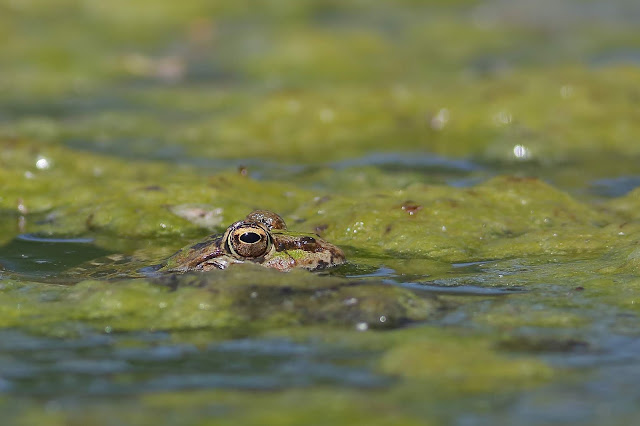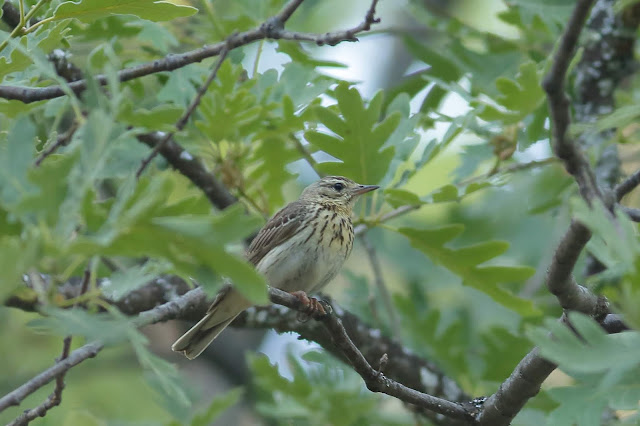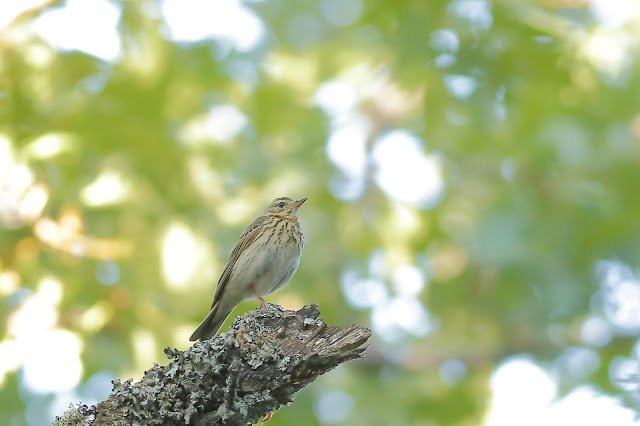Hola una vez más.
Hi again.
En el siguiente enlace podéis ver nuestros próximos viajes fotográficos y de observación de aves y mamíferos nacionales y al extranjero. Espero que os gusten y os animéis a venir conmigo. Una experiencia que nunca olvidareis.
Hi again.
En el siguiente enlace podéis ver nuestros próximos viajes fotográficos y de observación de aves y mamíferos nacionales y al extranjero. Espero que os gusten y os animéis a venir conmigo. Una experiencia que nunca olvidareis.
In the following link you can see our next national and foreign Birds and Mammals photographic and observation trips. I hope you like them and I encourage you to come with me. An experience that you will not forget.
Esta entrada es sobre algunas aves que pudimos observar y fotografiar en la Sierra del Rincón a principios de junio. Esta sierra fue declarada por la UNESCO Reserva de la Biosfera en el 2005.
This post is about some Birds that we could watched and photograph in the Sierra del Rincón in the beginning of June. This Mountain Range was declared by the UNESCO Biosphere Reserve in 2005.
Además de poder verse varias especies de currucas, las estrellas de esta parte de la geografía Madrileña son los alcaudones dorsirrojos (Lanius collurio), los papamoscas cerrojillos (Ficedula hypoleuca) y los bisbitas arbóeros (Anthus trivialis).
Besides being able to see several species of warblers, the stars of this part of the Madrilenian geography are Red-backed Shrikes, Pied Flycatchers and Tree Pipits.
También son de destacar la gran variedad de flora e insectos que se pueden observar.
Also noteworthy is the great variety of Flora and Insects that can be observed.
He dividido el blog en dos partes. La primera la hicimos el día 1 de junio en una excursión programada y la segunda el 11 de junio en un viaje privado en el que el cliente quería fotografiar a los papamoscas cerrojillos (Ficedula
hypoleuca).
I have divided the blog in two parts. The first was made on June 1 on a scheduled excursion and the second on June 11 on a private trip in which the client wanted to photograph the Pied Flycatchers.
El tiempo en la primera excursión fue muy bueno pero en la segunda hubo algunos momentos de lluvia pero por la tarde hizo sol pero más fresca de lo que es normal para esta época del año.
The weather in the first excursion was very good but in the second there were some rainy moments but in the afternoon it was sunny but cooler than usual for this time of the year.
Este es un macho de papamoscas cerrojillo (Ficedula
hypoleuca), uno de los protagonistas de estos dos viajes.
This is a male Pied Flycatcher (Ficedula hypoleuca), one of the protagonists of these two trips.
Viaje programado 1 de Junio:
Scheduled trip June 1st:
En cuanto llegamos al punto de partida de la excursión, los alcaudones dorsirrojos (Lanius collurio) hicieron acto de presencia.
As soon as we reached the starting point of the excursion, the Red-backed Shrikes showed up.
Vimos varios machos pero ninguna hembra pues debían estar incubando.
We saw several males but no female because they should be incubating.
Y enseguida empezamos a ver insectos. En la foto una mariposa blanca del majuelo (Aporia crataegi).
And immediately we begin to see insects. In the photo a Blackveined White.
Una doncella de ondas rojas (Euphydryas aurinia).
A Marsh Fritillary.
And this one a Queen of Spain Fritillary.
Busardo ratonero (Buteo buteo).
Common
Buzzard.
Un alcotán europeo (Falco subbuteo) hizo una rápida pasada por donde estábamos.
A Hobby made a quick showed up where we were.
Este macho de curruca mirlona (Sylvia
hortensis) no quiso salir del arbusto donde se estaba alimentando y hay que tener buena vista para verle.
This male Western Orphean
Warbler did not want to leave the bush where he was feeding and you have to have good eyesight to see him.
Vimos varios buitres leonados (Gyps
fulvus) pero ninguno pasó cerca.
We saw several Griffon Vultures but none passed close.
Un águila calzada (Aquila
pennata) morfo intermedio.
A dark-paler morpho Booted
Eagle.
Y esta otra de morfo oscuro.
And this other one of dark morpho.
Vimos muchas currucas zarceras (Sylvia communis).
We saw many Common
Whitethroat.
Vimos y oímos algunos cucos comunes (Cuculus
canorus).
We saw and heard some Common Cuckoos.
Este año estoy observando una gran cantidad de mosquiteros papialbos (Phylloscopus
bonelli).
This year I am observing a large number of Western
Bonelli's Warbler.
Vimos tan solo a este acentor común (Prunella
modularis).
We saw only this Dunnock.
Milano real (Milvus
milvus).
Red Kite.
Y en el lugar que comimos había un abrevadero en el que se podían oír y ver algunas ranas comunes (Pelophylax perezi).
And in the place we ate there was a watering hole where you could hear and see some Iberian green frogs.
Después del almuerzo nos dirigimos a la zona donde se pueden ver con más facilidad los papamoscas cerrojillo (Ficedula
hypoleuca). En la foto una alondra totovía (Lullula
arborea).
After lunch we go to the area where you can more easily see the Pied Flycatchers. In the photo a Wood Lark.
Y algunos insectos como esta blanquita de la col (Pieris rapae).
And some insects like this Small White.
Y este macho de ciervo volante (Lucanus cervus).
And this male Stag Beetle.
Este trepador azul (Sitta europaea) había escogido un nido muy cerca del suelo e igual por eso la entrada estaba embarrada de acercarse algún jabalí a olisquear.
This European Nuthatch had chosen a nest very close to the ground and it might be the reason why the entrance was muddy because a Boar approached to sniff.
Petirrojo europeo (Erithacus
rubecula).
European Robin.
Macho de pinzón vulgar (Fringilla
coelebs).
Male Common
Chaffinch.
Y llegamos a donde se ven los papamoscas cerrojillos (Ficedula
hypoleuca). En la foto un macho.
And we get to where the Pied Flycatcher can be seen. In the photo a male.
Otro.
Another one.
Hembra.
Female.
Y ahora me imagino que ya sabréis diferenciar entre al macho, en la foto, y en los que predomina el gris son las hembras.
And now I imagine that you already know how to differentiate between male, in the photo, and in those who predominate the gray are females.
Bonitas aves.
Beautiful Birds.
Y antes de irnos de la zona pudimos observar varios bisbitas arbóreos (Anthus
trivialis).
And before leaving the area we could watched several Tree
Pipit.
Viaje privado 11 de junio:
Private trip June 11th:
Los alcaudones dorirrojos (Lanius collurio) continuaban muy esquivos y tampoco vimos hembras.
The Red-backed Shrikes continued very elusive and we did not see females either.
Macho de verderón común (Carduelis
chloris).
Male Greenfinch.
Hembra de escribano soteño (Emberiza
cirlus).
Female Cirl
Bunting.
Vimos varios gorriones chillones (Petronia
petronia).
We saw several Rock Sparrows.
Había una pareja de busardos ratoneros (Buteo buteo).
There was a pair of Common
Buzzard.
Y la hembra le pedía al macho la presa que este llevaba en sus garras.
And the female was begging the male for the prey that he was carrying in his claws.
Mosquitero papialbo (Phylloscopus
bonelli).
Western
Bonelli's Warbler.
Me encantan los tonos verdosos de sus alas.
I love the greenish tones of their wings.
Un reyezuelo listado (Regulus
ignicapilla).
A Firecrest.
Herrerillo común (Cyanistes
caeruleus).
Blue Tit.
Hembra de colirrojo tizón (Phoenicurus
ochruros).
Female Black
Redstart.
Y como era de esperar vimos varias mariposas. En al foto una mariposa de los muros (Pararge aegeria).
And as expected we saw several butterflies. In the photo a Speckled Wood.
Blanquita de la col (Pieris rapae).
Small White.
Sofía (Issoria lathonia).
Queen of Spain Fritillary.
Deshollinador (Odezia atrata).
Chimney Sweeper.
Chochín común (Troglodytes
troglodytes).
Winter Wren.
Gavilán común (Accipiter
nisus).
Eurasian
Sparrowhawk.
Había muchos de estos insectos que no he encontrado su nombre en español pero si el latín Libelloides coccajus.
Owly Sulphur.
Todos los que fotografié eran hembras.
All those I photographed were females.
Preciosos.
Beautiful.
Zapateros (Gerris lacustris).
Common Pond Skater.
Este joven de lavandera blanca ( Motacilla
alba) no hacía mucho que había abandonado su nido.
This juvenile White
Wagtail had not left his nest long ago.
Y otras mariposas más. En la foto una Ajedrezada serrana (Pyrgus alveus).
Large Grizzled Skipper.
Falsa limbada (Cyaniris semiargus).
Mazarine Blue.
Dorada línea larga (Thymelicus sylvestris).
Small Skipper.
Este águila calzada (Aquila
pennata) morfo claro nos distrajo de buscar más mariposas.
This pale morpho Booted Eagle distracted us from looking for more butterflies.
También vimos como este arrendajo euroasiático (Garrulus
glandarius) estaba llevando material para su nido.
We also saw how this Eurasian Jaw was carrying material for its nest.
Pero la distracción no duró mucho. En la foto un escarabajo tigre (Cicindela maroccana).
But the distraction did not last long. In the photo a Tiger Beetle.
Colias de Berger (Colias alfacariensis).
Berger's Clouded Yellow.
Pandora, (Argynnis pandora).
Cardinal.
Aquí está con las alas plegadas.
Here it is with closed wings.
Cejialba (Callophrys rubi).
Green Hairstreak.
Las jaras estaban en flor.
Rockrose were in bloom.
Aunque ha sido una primavera muy seca, se podían ver algunos gladiolos silvestres.
Although it has been a very dry spring, you could see some wild Gladioli.
También vimos varios petirrojos europeos (Erithacus
rubecula).
We also saw several European Robin.
Y por fin los deseados papamoscas cerrojillo (Ficedula
hypoleuca).
And finally the desired Pied Flycatchers.
Como ya os explique antes el dimorfismo sexual de esta especie no me voy a repetir más.
As I explained before the sexual dimorphism of this species, I will not repeat it again.
Y para finalizar os muestro dos fotos de los bisbitas arbóreos (Anthus
trivialis) que vimos antes de abandonar esta zona.
And finally I show you two photos of the Tree
Pipit that we saw before leaving this area.
Hasta pronto.
See you soon.

















































































































Un reportaje espléndido y las fotos muy bonitas. Gracias por compartir
ResponderEliminarEl ciervo volante, no lo había oido y visto nunca
ResponderEliminarMuchas gracias.
EliminarMe alegro de haberte enseñado el primer ciervo volante que ves.
Saludos,
Luis